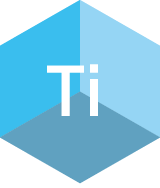Grafenförbättrad vattenrening
Resultat
Vattenrening är den vanligaste lösningen på de globala problem som orsakas av vattenbrist. Lågt motstånd mot biologisk nedsmutsning är en av de vanligaste utmaningarna i den nuvarande vattenreningsteknologin. Vårt mål är att utveckla skalbara och billiga tekniker för att effektivt lösa problem med biologisk nedsmutsning och främja nuvarande vattenrening.
I praktiken har vi utvecklat en unik bläckstråle-skrivarteknik för att tillverka rena grafenbeläggningar med mängder av vertikalt stående flagor. Deras antimikrobiella prestanda har utforskats genom två oberoende tester. I Hygicult TPC-testet är det mikrobiella antalet på de vertikala grafenbeläggningarna försumbar jämfört med den för horisontell grafenbeläggning. I cellinfärgnings-testet framkommer att endast de vertikala grafenproverna är utan fläckar. Vi drar därmed slutsatsen att de tryckta vertikala grafenbeläggningarna uppvisar utmärkt antimikrobiell prestanda. Med tanke på den enkla, skalbara och billiga bearbetningen med bläckstråleskrivare tror vi att tekniken har stor potential att ta itu med problem kring biologisk nedsmutsning och väsentligt bidra till den växande marknaden för vattenrening.
Vi tror att den effektiva antimikrobiella prestandan hos vertikala grafenbeläggningar är resultatet av den unika 2D-flagsstrukturen för grafen och deras vertikala orientering, som interagerar med de mikrobiella cellerna på ett ortogonalt sätt och avsevärt ökar chansen att döda cellerna genom fysisk störning.
Ett enkelt sätt att kommersialisera den vertikala grafenbeläggningstekniken är att integrera den med kommersiell vattenreningsteknik. Innan det behöver vi fortfarande skala upp bläckformulerings-tekniken, utveckla tryckprocessen på olika underlag (särskilt böjda ytor) och genomföra mer omfattande antimikrobiella tester (som livstid). Dessa tekniska aspekter kan behandlas eller förtydligas i ett uppföljande forskningsprojekt under de kommande 2–3 åren.



